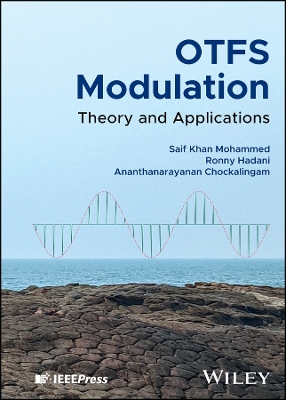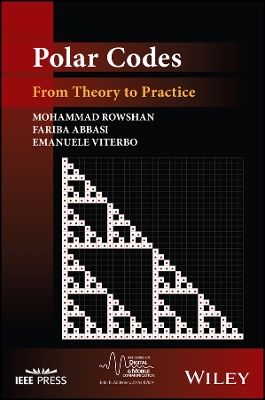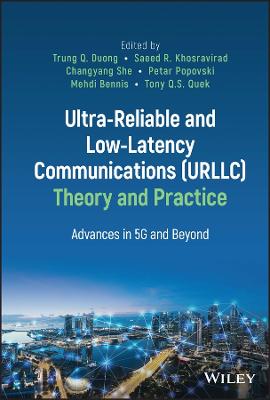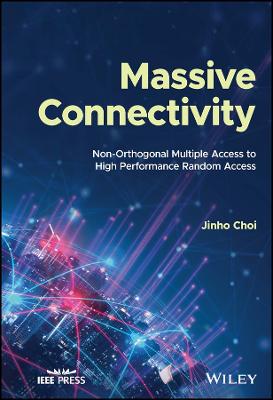Design and Optimization for 5G Wireless Communications
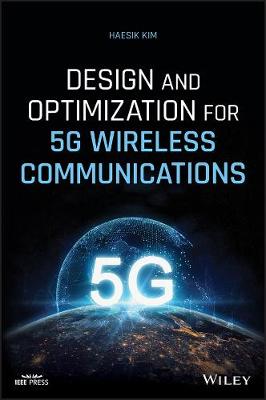 -15%
portes grátis
-15%
portes grátis
Design and Optimization for 5G Wireless Communications
Kim, Haesik
John Wiley & Sons Inc
04/2020
424
Dura
Inglês
9781119494553
15 a 20 dias
880
Descrição não disponível.
Preface xi
List of Abbreviations xiii
Part I Mathematical Methods and Optimization Theories for Wireless Communications 1
1 Historical Sketch of Cellular Communications and Networks 3
1.1 Evolution of Cellular Communications and Networks 3
1.2 Evolution to 5G Networks 9
References 11
2 5G Wireless Communication System Parameters and Requirements 13
2.1 5G Requirements 13
2.2 Trade-off of 5G System Metrics 16
Problems 19
References 20
3 Mathematical Methods for Wireless Communications 21
3.1 Signal Spaces 21
3.2 Approximation and Estimation in Signal Spaces 32
3.2.1 Approximation Problems 32
3.2.2 Least Squares Estimation 35
3.2.3 Minimum Mean-Squared Error Estimation 45
3.2.4 Maximum Likelihood and Maximum A Posteriori Estimation 65
3.3 Matrix Factorization 71
3.3.1 LU Decomposition 71
3.3.2 Cholesky Decomposition 76
3.3.3 QR Decomposition 77
3.3.4 SVD Decomposition 85
Problems 92
References 95
4 Mathematical Optimization Techniques for Wireless Communications 97
4.1 Introduction 97
4.2 Mathematical Modeling and Optimization Process 99
4.3 Linear Programming 108
4.4 Convex Optimization 120
4.4.1 Barrier Method 124
4.4.2 Primal-Dual Interior Point Method 130
4.5 Gradient Descent Method 138
Problems 146
References 149
5 Machine Learning 151
5.1 Artificial Intelligence, Machine Learning, and Deep Learning 152
5.2 Supervised and Unsupervised Learning 153
5.3 Reinforcement Learning 177
Problems 191
References 193
Part II Design and Optimization for 5G Wireless Communications and Networks 195
6 Design Principles for 5G Communications and Networks 197
6.1 New Design Approaches and Key Challenges of 5G Communications and Networks 198
6.1.1 5G Frequency Bands 198
6.1.2 Low Latency 199
6.1.3 More Efficient Radio Resource Utilization 201
6.1.4 Small Cells and Ultra-Dense Networks 202
6.1.5 Higher Flexibility 202
6.1.6 Virtualization 203
6.1.7 Distributed Network Architecture 204
6.1.8 Device-Centric Communications 205
6.1.9 New Air Interfaces 206
6.1.10 Big Data Management 206
6.2 5G New Radio 207
6.2.1 5G Radio Access Network Architecture 207
6.2.2 5G NR Deployment Scenarios 208
6.2.3 Frame Structure 209
6.2.4 5G Logical, Transport, and Physical Channels 213
6.2.5 5G Protocol Layers 217
6.2.6 5G NR Physical Layer Processing 220
6.2.7 5G Initial Access Procedure and Beam Management 222
6.3 5G Key Enabling Techniques 226
6.3.1 5GWaveforms 226
6.3.2 5G Multiple Access Schemes 227
6.3.3 Channel Coding Schemes 228
6.3.4 MIMO 230
6.3.5 mmWAVE 231
6.3.6 Network Slicing 232
6.3.7 Multi-access Edge Computing 232
Problems 235
References 237
7 Enhanced Mobile Broadband Communication Systems 239
7.1 Introduction 239
7.2 Design Approaches of eMBB Systems 240
7.3 MIMO 242
7.3.1 Capacity of MIMO Channel 243
7.3.2 Space-Time Coding Design 251
7.3.3 Spatial Multiplexing Design 262
7.3.4 Massive MIMO 268
7.4 5G Multiple Access Techniques 271
7.4.1 OFDM System Design 271
7.4.2 FBMC, GFDM, and UFMC 280
7.5 5G Channel Coding and Modulation 284
7.5.1 LDPC Codes 285
7.5.2 Coding and Modulation for High Spectral Efficiency 291
Problems 299
References 300
8 Ultra-Reliable and Low Latency Communication Systems 303
8.1 Design Approaches of URLLC Systems 304
8.2 Short Packet Transmission 306
8.3 Latency Analysis 317
8.4 Multi-Access Edge Computing 328
Problems 339
References 340
9 Massive Machine Type Communication Systems 343
9.1 Introduction 343
9.2 Design Approaches of mMTC Systems 344
9.3 Robust Optimization 351
9.4 Power Control and Management 362
9.4.1 Linear Programming for Power Control in Distributed Networks 363
9.4.2 Power Control Problem Formulations 366
9.4.3 Beamforming for Transmit Power Minimization 370
9.5 Wireless Sensor Networks 376
Problems 392
References 393
Index 397
List of Abbreviations xiii
Part I Mathematical Methods and Optimization Theories for Wireless Communications 1
1 Historical Sketch of Cellular Communications and Networks 3
1.1 Evolution of Cellular Communications and Networks 3
1.2 Evolution to 5G Networks 9
References 11
2 5G Wireless Communication System Parameters and Requirements 13
2.1 5G Requirements 13
2.2 Trade-off of 5G System Metrics 16
Problems 19
References 20
3 Mathematical Methods for Wireless Communications 21
3.1 Signal Spaces 21
3.2 Approximation and Estimation in Signal Spaces 32
3.2.1 Approximation Problems 32
3.2.2 Least Squares Estimation 35
3.2.3 Minimum Mean-Squared Error Estimation 45
3.2.4 Maximum Likelihood and Maximum A Posteriori Estimation 65
3.3 Matrix Factorization 71
3.3.1 LU Decomposition 71
3.3.2 Cholesky Decomposition 76
3.3.3 QR Decomposition 77
3.3.4 SVD Decomposition 85
Problems 92
References 95
4 Mathematical Optimization Techniques for Wireless Communications 97
4.1 Introduction 97
4.2 Mathematical Modeling and Optimization Process 99
4.3 Linear Programming 108
4.4 Convex Optimization 120
4.4.1 Barrier Method 124
4.4.2 Primal-Dual Interior Point Method 130
4.5 Gradient Descent Method 138
Problems 146
References 149
5 Machine Learning 151
5.1 Artificial Intelligence, Machine Learning, and Deep Learning 152
5.2 Supervised and Unsupervised Learning 153
5.3 Reinforcement Learning 177
Problems 191
References 193
Part II Design and Optimization for 5G Wireless Communications and Networks 195
6 Design Principles for 5G Communications and Networks 197
6.1 New Design Approaches and Key Challenges of 5G Communications and Networks 198
6.1.1 5G Frequency Bands 198
6.1.2 Low Latency 199
6.1.3 More Efficient Radio Resource Utilization 201
6.1.4 Small Cells and Ultra-Dense Networks 202
6.1.5 Higher Flexibility 202
6.1.6 Virtualization 203
6.1.7 Distributed Network Architecture 204
6.1.8 Device-Centric Communications 205
6.1.9 New Air Interfaces 206
6.1.10 Big Data Management 206
6.2 5G New Radio 207
6.2.1 5G Radio Access Network Architecture 207
6.2.2 5G NR Deployment Scenarios 208
6.2.3 Frame Structure 209
6.2.4 5G Logical, Transport, and Physical Channels 213
6.2.5 5G Protocol Layers 217
6.2.6 5G NR Physical Layer Processing 220
6.2.7 5G Initial Access Procedure and Beam Management 222
6.3 5G Key Enabling Techniques 226
6.3.1 5GWaveforms 226
6.3.2 5G Multiple Access Schemes 227
6.3.3 Channel Coding Schemes 228
6.3.4 MIMO 230
6.3.5 mmWAVE 231
6.3.6 Network Slicing 232
6.3.7 Multi-access Edge Computing 232
Problems 235
References 237
7 Enhanced Mobile Broadband Communication Systems 239
7.1 Introduction 239
7.2 Design Approaches of eMBB Systems 240
7.3 MIMO 242
7.3.1 Capacity of MIMO Channel 243
7.3.2 Space-Time Coding Design 251
7.3.3 Spatial Multiplexing Design 262
7.3.4 Massive MIMO 268
7.4 5G Multiple Access Techniques 271
7.4.1 OFDM System Design 271
7.4.2 FBMC, GFDM, and UFMC 280
7.5 5G Channel Coding and Modulation 284
7.5.1 LDPC Codes 285
7.5.2 Coding and Modulation for High Spectral Efficiency 291
Problems 299
References 300
8 Ultra-Reliable and Low Latency Communication Systems 303
8.1 Design Approaches of URLLC Systems 304
8.2 Short Packet Transmission 306
8.3 Latency Analysis 317
8.4 Multi-Access Edge Computing 328
Problems 339
References 340
9 Massive Machine Type Communication Systems 343
9.1 Introduction 343
9.2 Design Approaches of mMTC Systems 344
9.3 Robust Optimization 351
9.4 Power Control and Management 362
9.4.1 Linear Programming for Power Control in Distributed Networks 363
9.4.2 Power Control Problem Formulations 366
9.4.3 Beamforming for Transmit Power Minimization 370
9.5 Wireless Sensor Networks 376
Problems 392
References 393
Index 397
Este título pertence ao(s) assunto(s) indicados(s). Para ver outros títulos clique no assunto desejado.
optimization algorithms; authors research works; low latency communication; use case scenarios; methods; communication problem; trade-off solution; novel introduction; communication industry; system capacity; system parameters
Preface xi
List of Abbreviations xiii
Part I Mathematical Methods and Optimization Theories for Wireless Communications 1
1 Historical Sketch of Cellular Communications and Networks 3
1.1 Evolution of Cellular Communications and Networks 3
1.2 Evolution to 5G Networks 9
References 11
2 5G Wireless Communication System Parameters and Requirements 13
2.1 5G Requirements 13
2.2 Trade-off of 5G System Metrics 16
Problems 19
References 20
3 Mathematical Methods for Wireless Communications 21
3.1 Signal Spaces 21
3.2 Approximation and Estimation in Signal Spaces 32
3.2.1 Approximation Problems 32
3.2.2 Least Squares Estimation 35
3.2.3 Minimum Mean-Squared Error Estimation 45
3.2.4 Maximum Likelihood and Maximum A Posteriori Estimation 65
3.3 Matrix Factorization 71
3.3.1 LU Decomposition 71
3.3.2 Cholesky Decomposition 76
3.3.3 QR Decomposition 77
3.3.4 SVD Decomposition 85
Problems 92
References 95
4 Mathematical Optimization Techniques for Wireless Communications 97
4.1 Introduction 97
4.2 Mathematical Modeling and Optimization Process 99
4.3 Linear Programming 108
4.4 Convex Optimization 120
4.4.1 Barrier Method 124
4.4.2 Primal-Dual Interior Point Method 130
4.5 Gradient Descent Method 138
Problems 146
References 149
5 Machine Learning 151
5.1 Artificial Intelligence, Machine Learning, and Deep Learning 152
5.2 Supervised and Unsupervised Learning 153
5.3 Reinforcement Learning 177
Problems 191
References 193
Part II Design and Optimization for 5G Wireless Communications and Networks 195
6 Design Principles for 5G Communications and Networks 197
6.1 New Design Approaches and Key Challenges of 5G Communications and Networks 198
6.1.1 5G Frequency Bands 198
6.1.2 Low Latency 199
6.1.3 More Efficient Radio Resource Utilization 201
6.1.4 Small Cells and Ultra-Dense Networks 202
6.1.5 Higher Flexibility 202
6.1.6 Virtualization 203
6.1.7 Distributed Network Architecture 204
6.1.8 Device-Centric Communications 205
6.1.9 New Air Interfaces 206
6.1.10 Big Data Management 206
6.2 5G New Radio 207
6.2.1 5G Radio Access Network Architecture 207
6.2.2 5G NR Deployment Scenarios 208
6.2.3 Frame Structure 209
6.2.4 5G Logical, Transport, and Physical Channels 213
6.2.5 5G Protocol Layers 217
6.2.6 5G NR Physical Layer Processing 220
6.2.7 5G Initial Access Procedure and Beam Management 222
6.3 5G Key Enabling Techniques 226
6.3.1 5GWaveforms 226
6.3.2 5G Multiple Access Schemes 227
6.3.3 Channel Coding Schemes 228
6.3.4 MIMO 230
6.3.5 mmWAVE 231
6.3.6 Network Slicing 232
6.3.7 Multi-access Edge Computing 232
Problems 235
References 237
7 Enhanced Mobile Broadband Communication Systems 239
7.1 Introduction 239
7.2 Design Approaches of eMBB Systems 240
7.3 MIMO 242
7.3.1 Capacity of MIMO Channel 243
7.3.2 Space-Time Coding Design 251
7.3.3 Spatial Multiplexing Design 262
7.3.4 Massive MIMO 268
7.4 5G Multiple Access Techniques 271
7.4.1 OFDM System Design 271
7.4.2 FBMC, GFDM, and UFMC 280
7.5 5G Channel Coding and Modulation 284
7.5.1 LDPC Codes 285
7.5.2 Coding and Modulation for High Spectral Efficiency 291
Problems 299
References 300
8 Ultra-Reliable and Low Latency Communication Systems 303
8.1 Design Approaches of URLLC Systems 304
8.2 Short Packet Transmission 306
8.3 Latency Analysis 317
8.4 Multi-Access Edge Computing 328
Problems 339
References 340
9 Massive Machine Type Communication Systems 343
9.1 Introduction 343
9.2 Design Approaches of mMTC Systems 344
9.3 Robust Optimization 351
9.4 Power Control and Management 362
9.4.1 Linear Programming for Power Control in Distributed Networks 363
9.4.2 Power Control Problem Formulations 366
9.4.3 Beamforming for Transmit Power Minimization 370
9.5 Wireless Sensor Networks 376
Problems 392
References 393
Index 397
List of Abbreviations xiii
Part I Mathematical Methods and Optimization Theories for Wireless Communications 1
1 Historical Sketch of Cellular Communications and Networks 3
1.1 Evolution of Cellular Communications and Networks 3
1.2 Evolution to 5G Networks 9
References 11
2 5G Wireless Communication System Parameters and Requirements 13
2.1 5G Requirements 13
2.2 Trade-off of 5G System Metrics 16
Problems 19
References 20
3 Mathematical Methods for Wireless Communications 21
3.1 Signal Spaces 21
3.2 Approximation and Estimation in Signal Spaces 32
3.2.1 Approximation Problems 32
3.2.2 Least Squares Estimation 35
3.2.3 Minimum Mean-Squared Error Estimation 45
3.2.4 Maximum Likelihood and Maximum A Posteriori Estimation 65
3.3 Matrix Factorization 71
3.3.1 LU Decomposition 71
3.3.2 Cholesky Decomposition 76
3.3.3 QR Decomposition 77
3.3.4 SVD Decomposition 85
Problems 92
References 95
4 Mathematical Optimization Techniques for Wireless Communications 97
4.1 Introduction 97
4.2 Mathematical Modeling and Optimization Process 99
4.3 Linear Programming 108
4.4 Convex Optimization 120
4.4.1 Barrier Method 124
4.4.2 Primal-Dual Interior Point Method 130
4.5 Gradient Descent Method 138
Problems 146
References 149
5 Machine Learning 151
5.1 Artificial Intelligence, Machine Learning, and Deep Learning 152
5.2 Supervised and Unsupervised Learning 153
5.3 Reinforcement Learning 177
Problems 191
References 193
Part II Design and Optimization for 5G Wireless Communications and Networks 195
6 Design Principles for 5G Communications and Networks 197
6.1 New Design Approaches and Key Challenges of 5G Communications and Networks 198
6.1.1 5G Frequency Bands 198
6.1.2 Low Latency 199
6.1.3 More Efficient Radio Resource Utilization 201
6.1.4 Small Cells and Ultra-Dense Networks 202
6.1.5 Higher Flexibility 202
6.1.6 Virtualization 203
6.1.7 Distributed Network Architecture 204
6.1.8 Device-Centric Communications 205
6.1.9 New Air Interfaces 206
6.1.10 Big Data Management 206
6.2 5G New Radio 207
6.2.1 5G Radio Access Network Architecture 207
6.2.2 5G NR Deployment Scenarios 208
6.2.3 Frame Structure 209
6.2.4 5G Logical, Transport, and Physical Channels 213
6.2.5 5G Protocol Layers 217
6.2.6 5G NR Physical Layer Processing 220
6.2.7 5G Initial Access Procedure and Beam Management 222
6.3 5G Key Enabling Techniques 226
6.3.1 5GWaveforms 226
6.3.2 5G Multiple Access Schemes 227
6.3.3 Channel Coding Schemes 228
6.3.4 MIMO 230
6.3.5 mmWAVE 231
6.3.6 Network Slicing 232
6.3.7 Multi-access Edge Computing 232
Problems 235
References 237
7 Enhanced Mobile Broadband Communication Systems 239
7.1 Introduction 239
7.2 Design Approaches of eMBB Systems 240
7.3 MIMO 242
7.3.1 Capacity of MIMO Channel 243
7.3.2 Space-Time Coding Design 251
7.3.3 Spatial Multiplexing Design 262
7.3.4 Massive MIMO 268
7.4 5G Multiple Access Techniques 271
7.4.1 OFDM System Design 271
7.4.2 FBMC, GFDM, and UFMC 280
7.5 5G Channel Coding and Modulation 284
7.5.1 LDPC Codes 285
7.5.2 Coding and Modulation for High Spectral Efficiency 291
Problems 299
References 300
8 Ultra-Reliable and Low Latency Communication Systems 303
8.1 Design Approaches of URLLC Systems 304
8.2 Short Packet Transmission 306
8.3 Latency Analysis 317
8.4 Multi-Access Edge Computing 328
Problems 339
References 340
9 Massive Machine Type Communication Systems 343
9.1 Introduction 343
9.2 Design Approaches of mMTC Systems 344
9.3 Robust Optimization 351
9.4 Power Control and Management 362
9.4.1 Linear Programming for Power Control in Distributed Networks 363
9.4.2 Power Control Problem Formulations 366
9.4.3 Beamforming for Transmit Power Minimization 370
9.5 Wireless Sensor Networks 376
Problems 392
References 393
Index 397
Este título pertence ao(s) assunto(s) indicados(s). Para ver outros títulos clique no assunto desejado.

